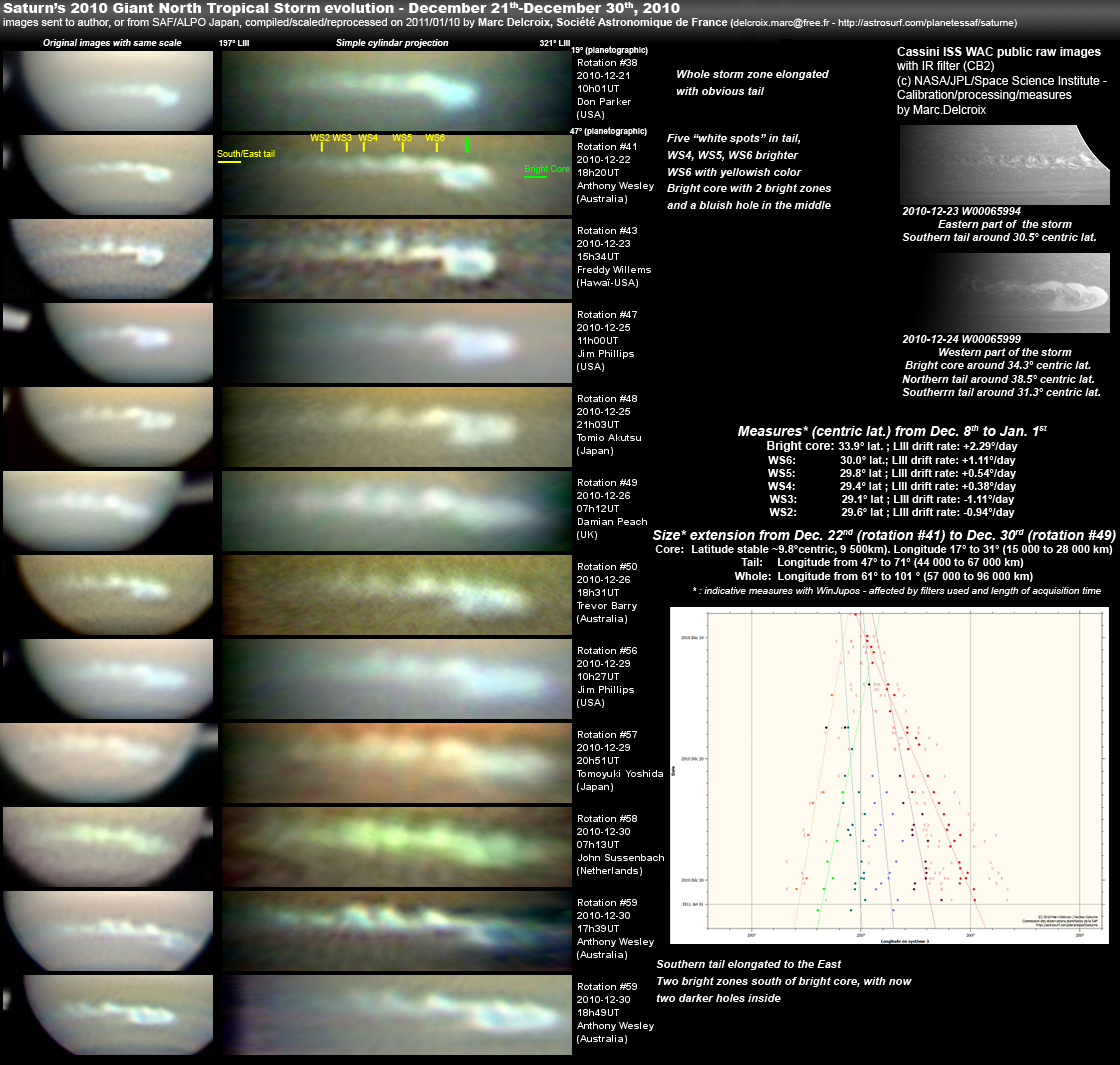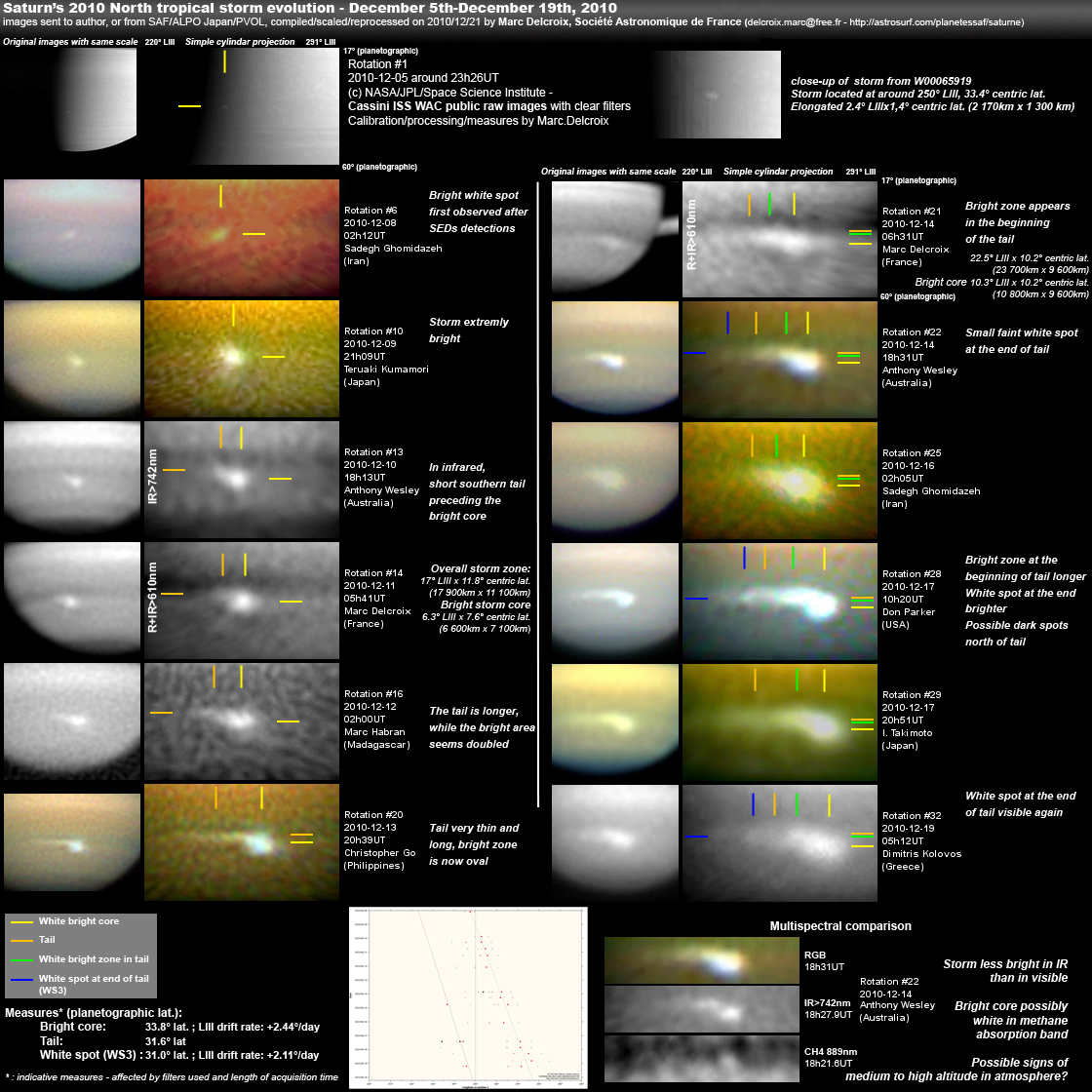Analysis based on amateur images received and SED activity information given by Georg Fischer in mails calling for observations
Second analysis from 2010.12.20-2010.12.30
Evolution to a Giant Storm
The
storm evolved very rapidly. As soon as Dec. 22nd, in the splendid hi-res image
of A.Wesley details appear, showing a bright core elongated in
longitude, separated into 3 zones, one bright, one bluish and a second
bright zone. North East of this zone, the storm shows the birth of a
tail in a bright yellowish spot (WS6), followed by a long tail
extending to the east (almost 50° in longitude) with 2 other bright
spots WS5 and WS4, and two faint spots WS3 and WS2.
These spots
can be followed on the best next images, WS2 and WS3 being more
difficult to image though. The Cassini probe in 2 sessions offered us a
very nice view of the western and eastern part of the zone, showing how
complex the tail is and the 3 lobes morphology of the brightest part.
Only
8 rotations later, two others hi-res images from A. Wesley again show
how the tail as been elongated to the east, and how the bright part
drifted to the west while spreading. At this date the whole zone is
spread over 100° in longitude (System III), that is around 100 000 km
long (and 10 000 km in latitude) !
A detailed drift analysis
shows that the spots in the tails have slow drifts (WS2 and WS3
eastward, WS4 and WS5 westward), while the beginning of the tail WS6
has a higher westward drift, and the bright core follows the westward
jet in the North Tropical zone around 2.3° LIII/day. This makes this
atmospheric feature a truly giant one on Saturn's scale.

First analysis from 2010.12.05-2010.12.19
Birth of a Great North Tropical Storm
Georg
Fischer issued an alert in December as Cassini's RPWS detected again
lightning in Saturn on Dec. 5/6th. Question was were would be the storm
located in latitude (information not given by RPWS). The answer
confirmed what Georg Fischer suspected, the new storm is located in
Saturn tropical zone, but not south as what has been observed by
amateurs since 2003 and Cassini ISS since 2004, but North! This
shows clearly a seasonality effect of lightning on Saturn, as the
northern hemisphere has just entered the spring after 2009 equinox.
The
Saturn Electrostatic Discharges detected were very strong, and it
turned out that the storm observed by amateurs was the brightest
feature seen on Saturn since probably at least 14 years, very easy to
image by amateurs and even visible on individual raw frames!
From
the single Cassini Imaging Science System image session showing the
storm at the very beginning, the storm rapidly grew more than 10 times
bigger, so spread in latitude that due to the difference in wind speed
upon this latitude range it probably left a long tail preceding it.
If
we consider that the very bright zones are associated to lightning, the
lightning zone is now very spread - with even maybe a white spot
further east of the main zone.
Contrary to most of the previous storms observed, this one is brighter in visible wavelengths than in infrared.
That is a fantastic start for Saturn's 2010-2011 apparition...
